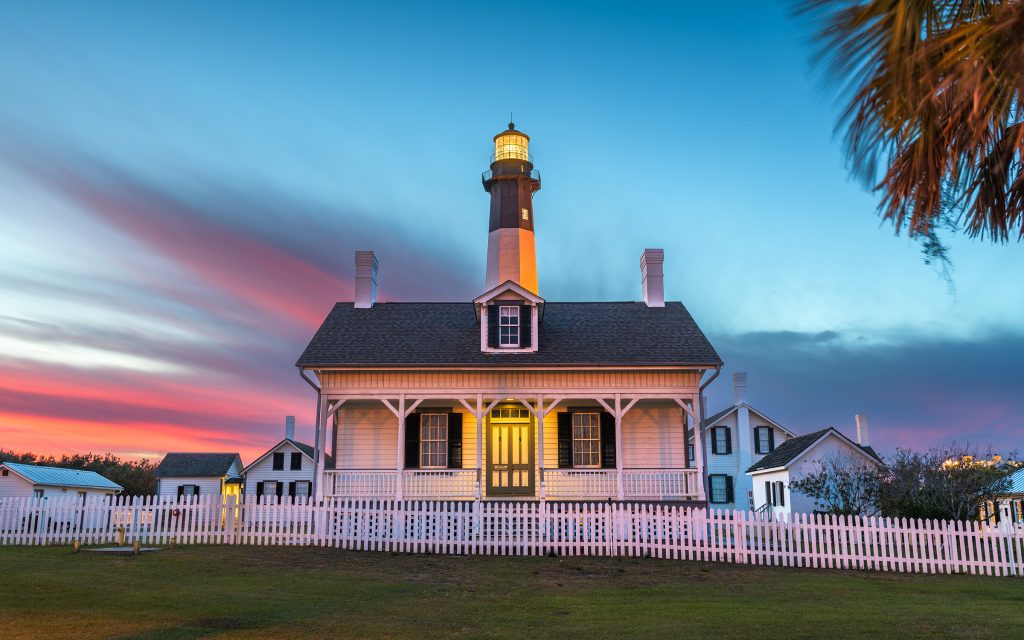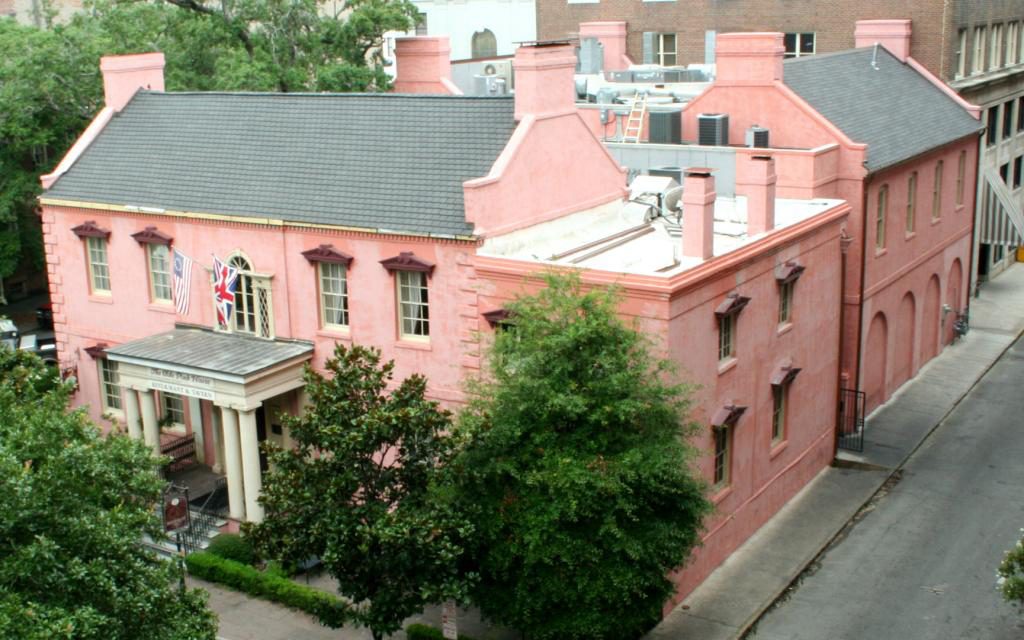
One-of-a-kind cities with matchless personalities could include New York City and its energy and grandeur, or the beauty and serenity of San Francisco, or the way New Orleans embraces all your senses. Savannah, Georgia is one of those rarified cities.
I had the joy of living in Savannah many years ago; an experience which is difficult to relate to others. How do you describe charm or gentility in abstract terms? Or use the expression of “Southern Hospitality” unless you can embrace the actual lifestyle. Or explain tranquility where everything slows down to a stroll.
I tried to relate my love for Savannah to my wife, Becky. I not only wanted to take her there, but I also wanted her to experience what makes it uniquely original. Words are lost describing it, you must feel it. And she did on a recent trip.
We rented a car because our plans included driving down the Atlantic Coast to St. Simons Island and then to St. Augustine and then visiting close friends in Tampa. However, if you are only traveling to Savannah, an airport shuttle to a downtown hotel is suggested because you can easily spend all your time in the relatively compact historic district.
The City of Savannah was established in 1733 as an English Colony and built around four park-like squares with homes surrounding them. As the community grew, so did the grid of squares to the 22 quads which now define the historic centerpiece of the city. You have seen some of them in movies ranging from Forest Gump on a bench in Chippewa Square when he said “My momma always said life was like a box of chocolates…” or Monterrey Square, a pivotal location in “Midnight in the Garden of Good and Evil.”

The historic district is approximately 1 mile long and ½ mile wide, easily walkable because every two blocks there is a stately square to sit among the historical statues or water fountains. Majestic 300-year-old trees, adorned with Spanish Moss, tower amidst gardens, palms and historical markers reliving the rich history of the city.
The northern end of the district borders the Savannah River, the largest single container terminal in North America and the fourth busiest port in the United States. There are several high-rise hotels on the river including a Hyatt, Westin and Marriot where you can watch the huge container cargo ships head upriver to docks with gigantic cranes to lift containers from ship to shore.
We stayed at the Hyatt which has balconies overlooking the waterfront and river where we sipped morning coffee and spent evening downtime watching the massive ships pass our room. The Savannah River bulkhead is also home for the majestic Georgia Queen paddleboat with several cruises each day including brunch and dinner excursions. Throughout the day a sizeable tugboat fleet brings ships to and from the Atlantic Ocean about 18 mile east.
We headed directly from the airport to the Atlantic Ocean to enjoy a seafood lunch. The 18-mile drive from the western edge of the city crosses causeways with marshes which stretch for miles. We passed the 1829 Fort Pulaski with its 18-foot-thick walls protecting the City of Savannah against raids by adversary ships. After a 30-minute drive we reached Tybee Island and the white sands of Savannah Beach.

The scent of boiling crab legs and shrimp led us to the Sting Ray’s Restaurant, with a large veranda filled with folks shucking oysters, cracking crab legs and peeling shrimp, where we enjoyed the most succulent shrimp we ever tasted. They were fresh from South Carolina waters and had the sweet and meaty taste of lobsters. What a way to begin a vacation.
The Savannah waterfront stretches almost the entire east-to-west length of the historic district. It is filled with more than 70 boutiques and souvenir outlets, antique shops and galleries, classy bistros and rollicking pubs, open air cafes and wonderful restaurants. Many of the enterprises are in warehouses of the former cotton exchange which loaded ships moored at the nearby pier. The cobblestone streets along the entire river edge were once the ballast for masted ships docked in Savannah.
For supper our first night we dined at Vic’s on the River, a refined restaurant located on three floors of a 200-year-old cotton warehouse. It features an outdoor patio, piano bar and even an ice cream shoppe on its river level entrance. Becky’s heart was set on having a deep South version of fried green tomatoes which she clearly thought were the best she ever had. Her entrée of fresh grouper caught off the Georgia coast that day was a treat. When I lived in Savannah, I remember having She Crab Soup on many occasions and Vic’s didn’t disappoint. Matched with giant scallops our dinner overlooking the river was a great way to end our first day.
Our next day began at an outdoor plaza at a Cajun restaurant called Huey’s. Their coffee is a lot like the chicory enhanced coffee at Café Du Monde in New Orleans. It gave us the jolt we needed for walking the 15 blocks for lunch at the iconic Mrs. Wilkes’ Dining Room.

Along the way we crossed four beautiful city squares where I sat to people watch and Becky shopped boutiques around each of the public commons. An easy 20-minute walk took almost 2 hours.
Mrs. Wilkes Dining Room is located in a brownstone home built in 1870 and originally used as a boarding house. When I ate there in the mid-1970s you would be ushered into the large dining hall for one of two lunch seating times. There were two long tables in the dining room and large wooden bowls of downhome Southern cooking were passed the length of the tables by patrons like a bucket brigade at a barn fire. You would begin each lunch session with a prayer and the Pledge of Allegiance.
Because of the pandemic, the hall is no longer open. You order outside and later pick up your meal on a large carboard tray with tea or other beverages. There are plenty of umbrella covered tables along the sidewalk to enjoy a leisurely lunch.
You choose one meat that on any given day could include fried chicken, beef stew, sausage, or meatloaf. You can choose 3 vegetables from a menu of cabbage, snap peas, macaroni and cheese, butter beans, black-eyed peas, rutabaga, squash, rice & gravy, mashed potatoes, candied yams, pickled beets, red rice, collard greens, okra and tomatoes, brown rice, potato salad, apple salad, macaroni salad, English peas and noodles, baked beans, or coleslaw. Generally, there are at least 12 different veggies offered at each meal.
The Wilkes’ family descendants now own and run the operation. When we were there, Mrs. Wilkes’ granddaughter was on premise signing cookbooks featuring menu items. When I used to eat at Mrs. Wilkes in the 1970s, that same granddaughter was a young lady helping greet guests. She was just as sweet the day we ate at the diner as she was 40+ years ago.
After a hearty meal we took another route home through a completely different set of squares, boutiques, museums, and beautiful churches. The walk was welcomed after such a hearty lunch.
At nine that evening we ate supper at another of the landmark restaurants in Savannah, The Pink House. The mansion was built in 1789 by a leading cotton broker, James Habersham. The building was bought and restored by Jim Williams, owner of Mercer House, in the middle of the 20th century. You may remember Jim Williams as the high society patron who was convicted of murder in the book “The Garden of Good and Evil.”

The Pink House is elegant, but a once strict dress code has been loosened to all forms of casual wear. The interior is like visiting an antebellum home and the food is famously held high standards for years. If you are dressed smartly your table will be downstairs in the parlors of the first floor with its candelabrums and fine furniture.
We still were full from our lunch at Mrs. Wilks so we only had appetizers at The Pink House including crab cakes, scallops and oysters. The seafood was so fresh it seemed like it was just unloaded two blocks away at the Savannah River. We needed to save room for the best Key Lime pie we have ever tasted.
There are so many things to do and see in Savannah, including several noted museums. There are transportation and tours by trolley, horse drawn carriages, hop on/off buses and even ghost tours. The Girl Scouts were founded in Savannah and you can visit the birthplace of Juliette Gordon Low. Each of the 22 city squares is dedicated to historic figures including Lafayette, Oglethorpe, Pulaski, and George Washington. Several magnificent churches are situated on various squares and stepping inside them is like entering a spiritual museum.
Visitors can spend several days in the city and still not see or do everything Savannah’s historic district has to offer. We left after two nights heading south along the Atlantic for other destinations on our bucket list. However, there is one thing we know will be on that list in years to come…… a return trip to the uniquely original City of Savannah.
– Bob Lynn has owned an advertising agency for more than 40-years and writes anything from commercials to brochures, so getting an opportunity to create something that isn’t selling a product or service is a true joy for him. He contributes stories for Downhome ranging from travel and restaurants reviews to book critiques and our What’s Special About Today feature.






